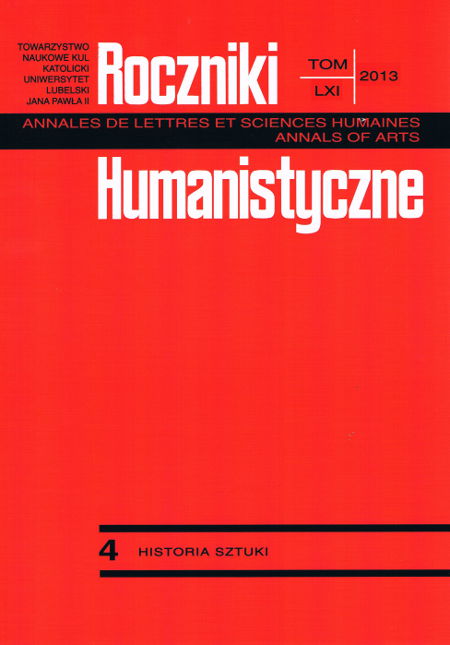Ficino i Savonarola. Dwa oblicza florenckiego renesansu
Ficino and Savonarola. Two faces of the Florence Renaissance
Author(s): Beata Gawrońska-OramusSubject(s): Cultural history
Published by: Towarzystwo Naukowe KUL & Katolicki Uniwersytet Lubelski Jana Pawła II
Keywords: Ficino; Savonarola; Pico della Mirandola; neo-Platonism; art; religion; Renaissance; republic; piagnoni; Apologia contra Savonarolam
Summary/Abstract: Analysis of the mutual relations between the main intellectual and spiritual authority of the Plato Academy – Marsilio Ficino on the one hand, and Girolamo Savonarola, whose activity was a reaction to the secularization of the Medicean times on the other, and a thorough study of their argument that turned into a ruthless struggle, are possible on the basis of selected sources and studies of the subject. The most significant are the following: Savonarola, Prediche e scritti; Guida Spirituale – Vita Christiana; Apologetico: indole e natura dell’arte poetica; De contempt mundi as well as Ficino’s letters and Apologia contra Savonarolam; and also Giovanni Pica della Mirandoli’s De hominis dignitate. The two adversaries’ mutual relations assumed the shape of surprising similarities and contradictions. They both came from the families of court doctors, which gave them access to broad knowledge of man’s nature that was available to doctors at those times, and let them grow up in the circles of sophisticated Renaissance elites. Ficino lived in the Medici’s residences in Florence, and Savonarola in the palace belonging to the Este family in Ferrara. Ficino eagerly used the benefits of such a situation, whereas Savonarola became an implacable enemy of the oligarchy that limited the citizens’ freedom they had at that time, and a determined supporter of the republic, to whose revival in Florence he contributed a lot. This situated them in political camps that opposed each other. They were similarly educated and had broad intellectual horizons. They left impressive works of literature concerned with the domain of spirituality, philosophy, religion, literature and arts, and their texts contain fewer contradictions than it could be supposed. Being priests they aimed at defending the Christian religion. Ficino wanted to reconcile the religious doctrine with the world of ancient philosophy and in order to do this he did gigantic work to make a translation of Plato’s works. He wanted to fish souls in the intellectual net of Plato’s philosophy and to convert them. And it is here that they differed from each other. Savonarola’s attitude towards the antiquity was hostile; he struggled for the purity of the Christian doctrine and for the simplicity of its followers’ lives. He called upon people to repent and convert. He first of all noticed an urgent need to deeply reform the Chuch, which led him to an immediate conflict with Pope Alexander VI Borgia. In accordance with the spirit of the epoch he was interested in astrology and he cast accurate horoscopes. Savonarola rejected astrology, and he believed that God, like in the past, sends prophets to the believers. His sermons, that had an immense impact on the listeners, were based on prophetic visions, especially ones concerning the future of Florence, Italy and the Church. /.../
Journal: Roczniki Humanistyczne
- Issue Year: 61/2013
- Issue No: 04
- Page Range: 103-126
- Page Count: 24
- Language: Polish

